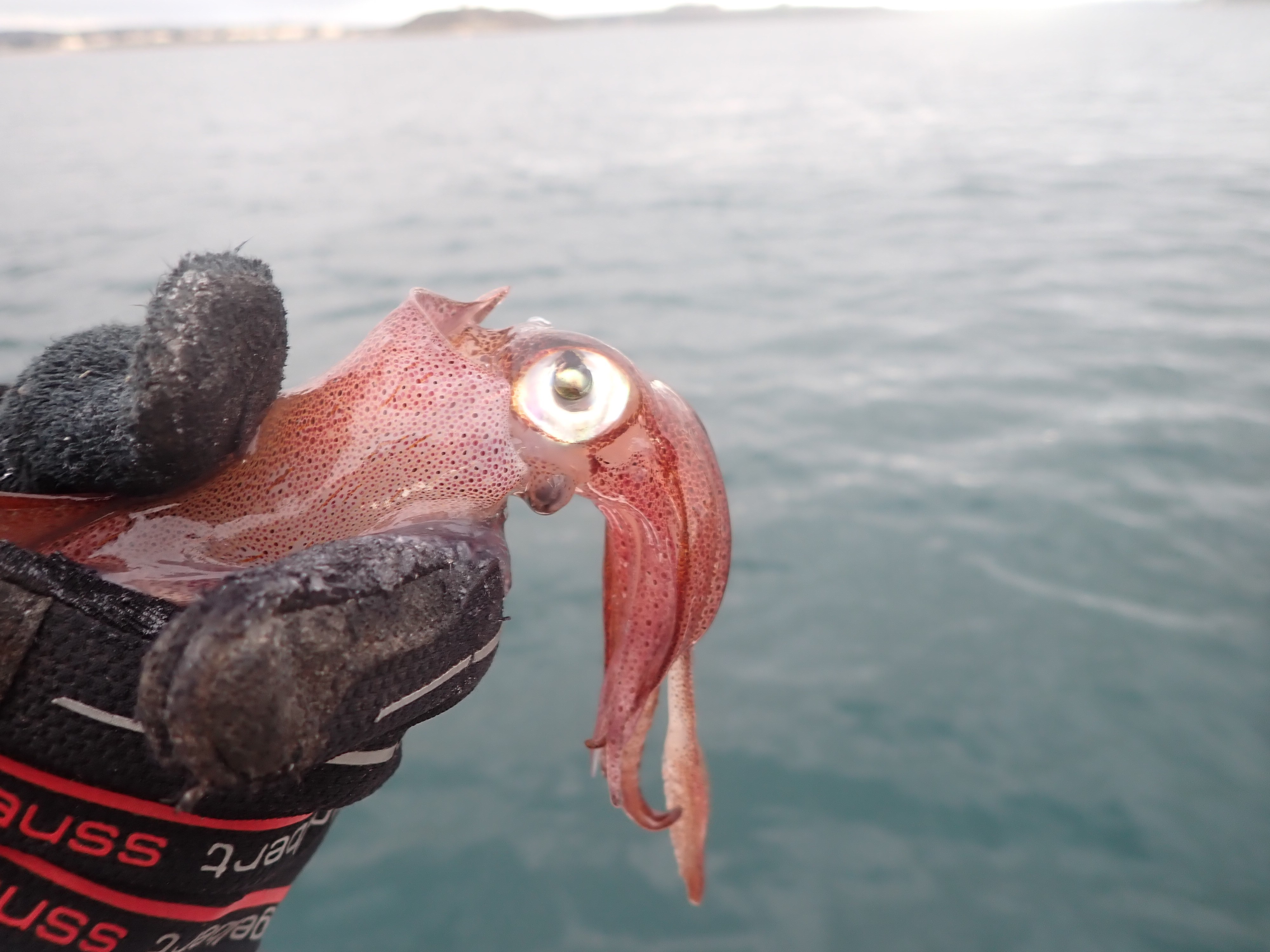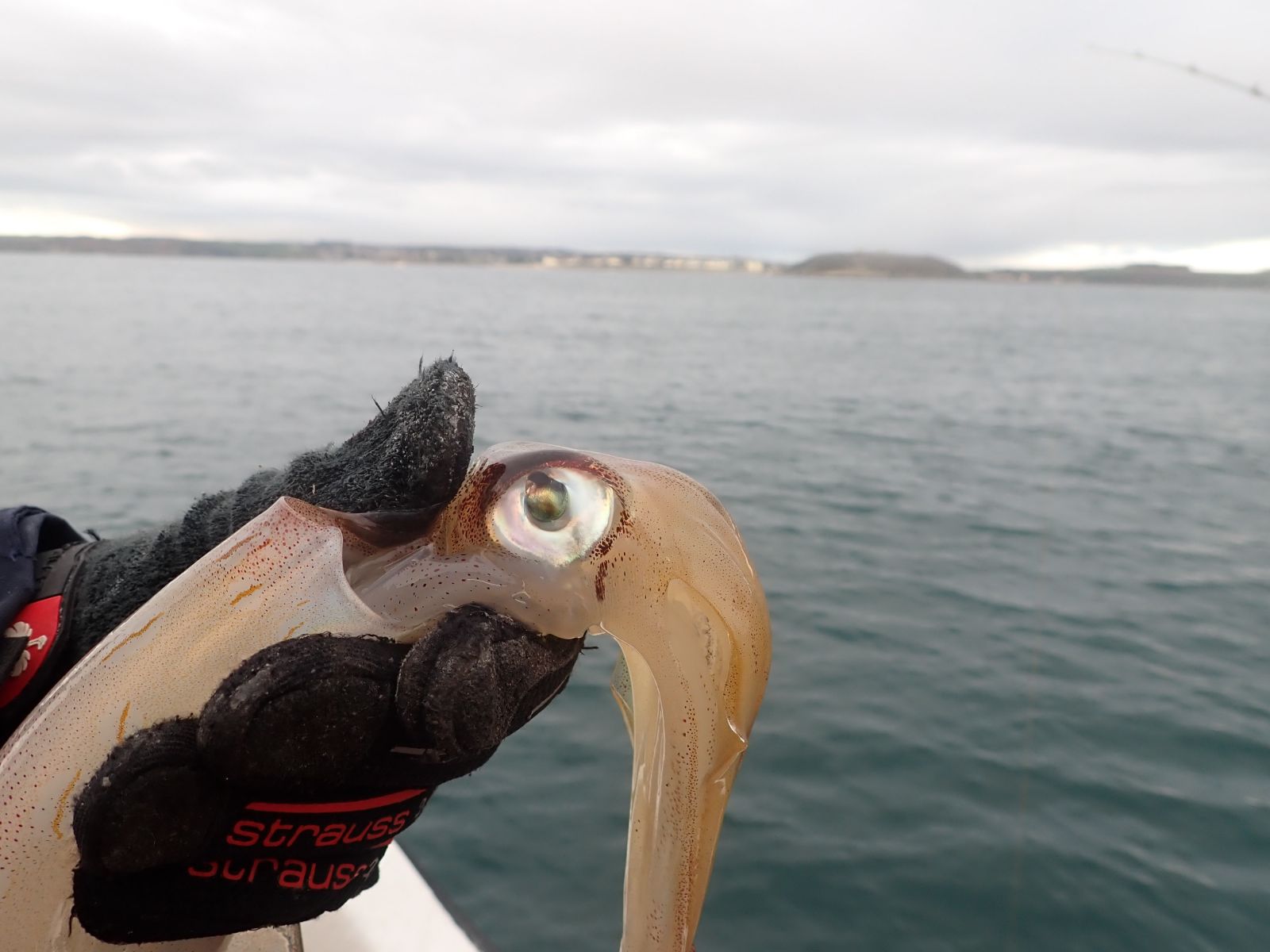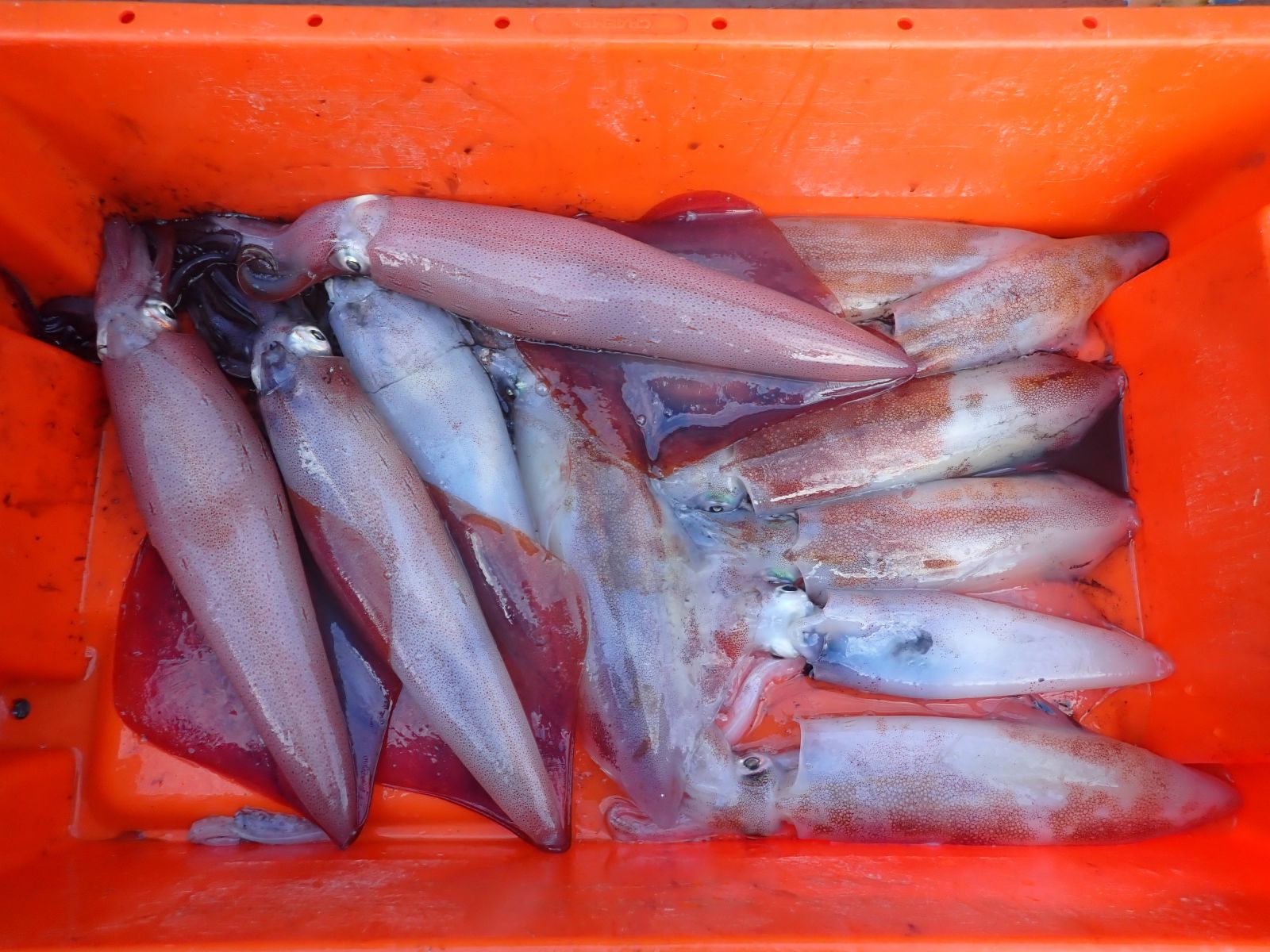Squid fishing has long been known as a ‘Black Art’, with their mystical tendencies of attacking jigs in sudden bouts and then disappearing as quickly as they appeared. In Cornwall squid can be a prized catch for our smaller, inshore handlining fleet, with the price per kg remaining relatively stable over the short period of time they are able to be caught in inshore waters. But what do we know about squid? Our new Fisheries Liaison Sarah investigates.
The familiar feeling of quiet excitement and anticipation falls over me as the skipper and I glide through mirror calm waters and out of the harbour. It’s an icy cold, clear, sunny morning, with a slight breath of wind. I haven’t been squid fishing before, but last week I was lucky enough to be heading out on two different fishing trips along the south coast of Cornwall with knowledgeable skippers kind enough to pass on their expertise to the young grasshopper (AKA me). I was soon to learn ‘Patience young grasshopper. Good things come to those that wait.’ , was going to be a phrase I thought of frequently whilst scouting out squid.
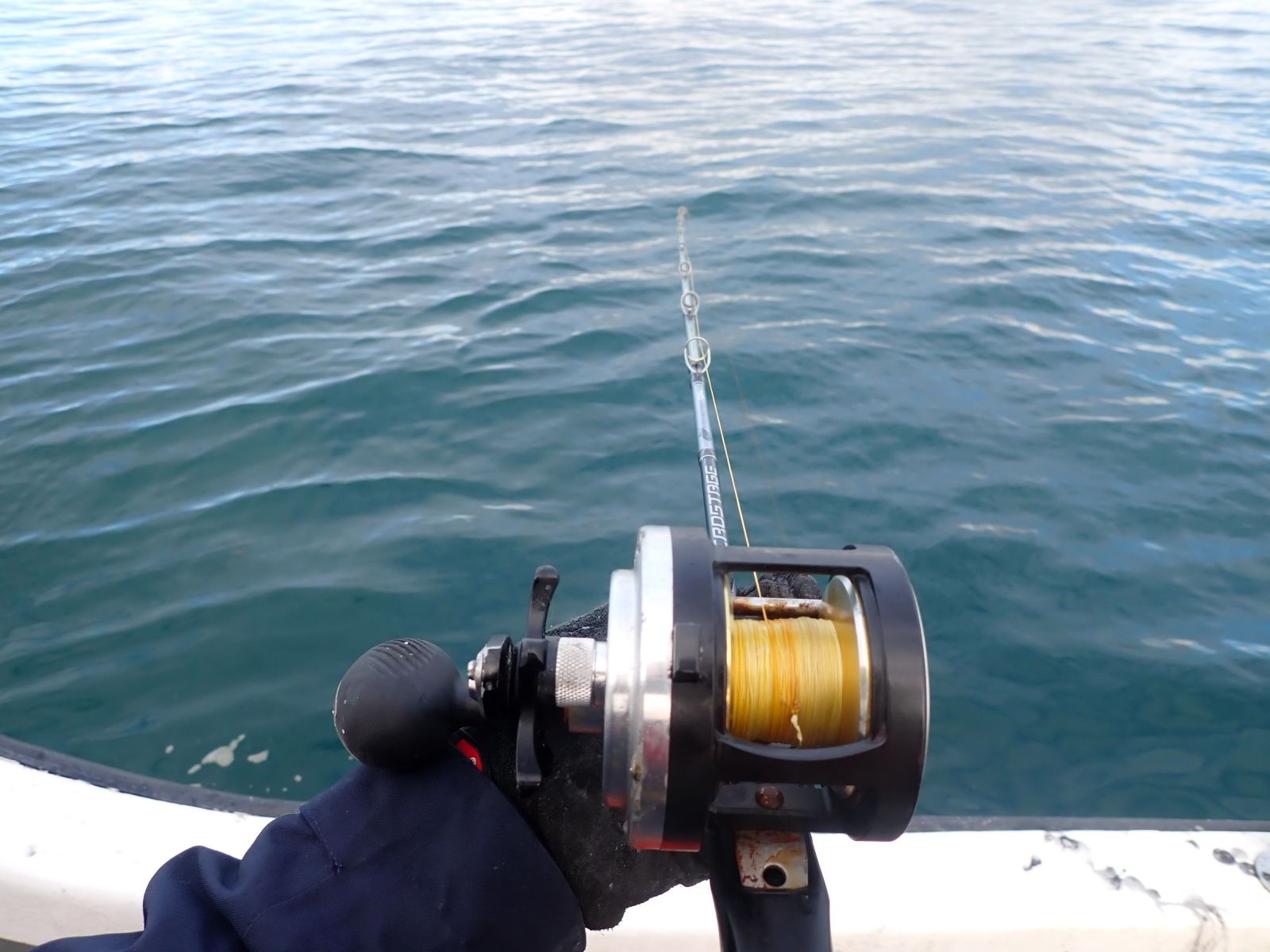
Figure 1. Rod and reel waiting for a bite.
Squid have been fished and studied in the UK for hundreds of years, with the first mention in the 1700’s. There are currently two species fished in the UK, the
veined squid (
Loligo forbesii) and the
european squid (
Loligo vulgaris). Although closely related, they tend to inhabit slightly different areas around the UK, have different spawning and nursey grounds and different lifespans.
As Nick showed me the jigs and helped set up the rod he lent me, I was curious to be able to see these animals up close and whether we would catch both species. Squid jigs are much debated, the lure is a small fish shape, supposed to represent a small fish or prawn in the eyes of a squid. The hook is made from multiple, upward facing metal spikes to help hold the squid to the hook when reeling in.
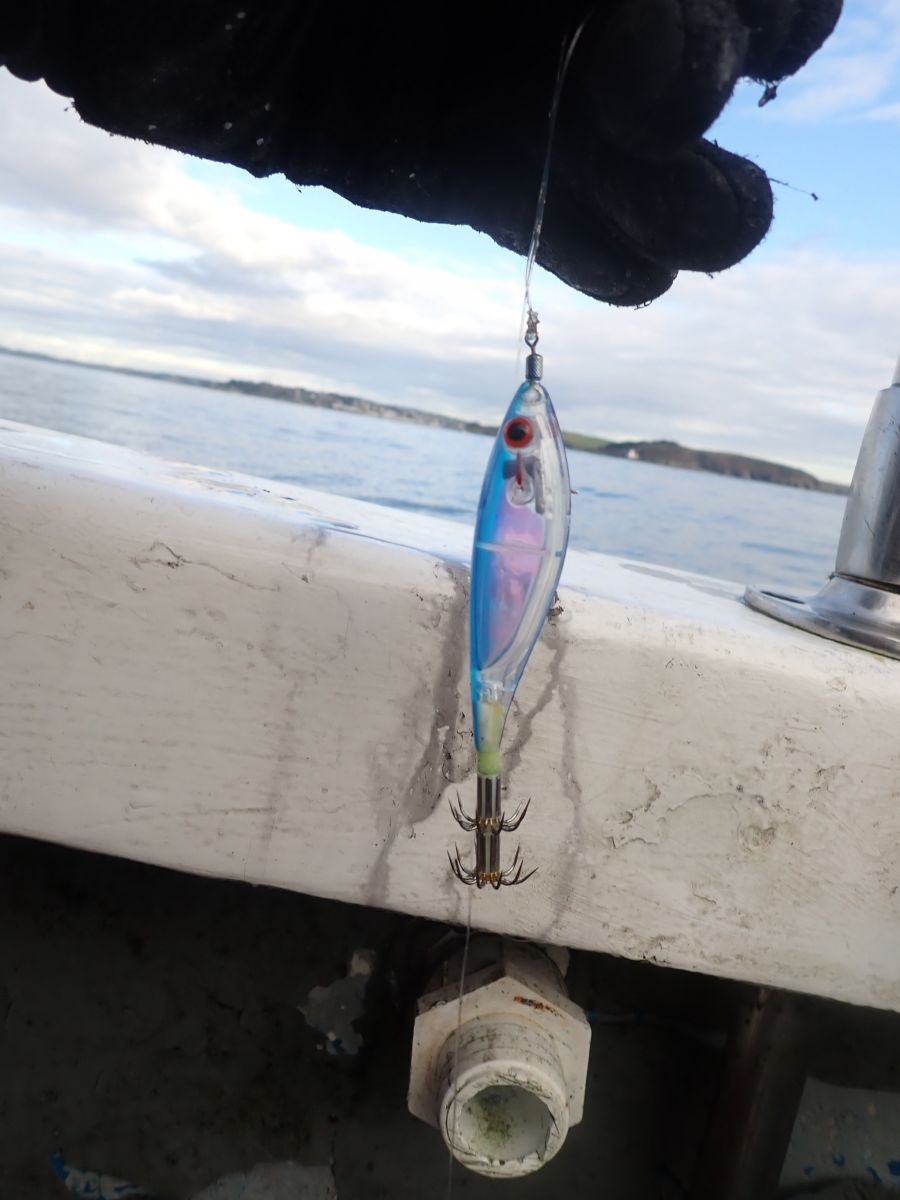
Figure 2. Squid jig.
The debate comes in the form of the colour of the plastic fish. There are multiple theories out there, and both fishers I went out with always recalled the colours of the jigs that had caught that day, and which colour which had the most success. I have to admit I was too busy trying not to lose the squid I had just reeled in to notice the jig colour! There are many articles online which discuss this in much more depth, including the wonderful Squid Diaries by Phil Lockley. However, on my two days of fishing it seemed the squid were keeping us on our toes and there was no real attraction to note. Baited jigs can also be used, however we didn’t try these when I was out.
Both European and veined squid can be caught in Cornwall, however the more common is the slightly smaller European squid. The two species can be identified by the different suckers on their tentacular club, European squid have two central rows of large suckers and veined squid have suckers of all the same size. They can also be identified by small differences in the percentage of mantle length the fin takes up.
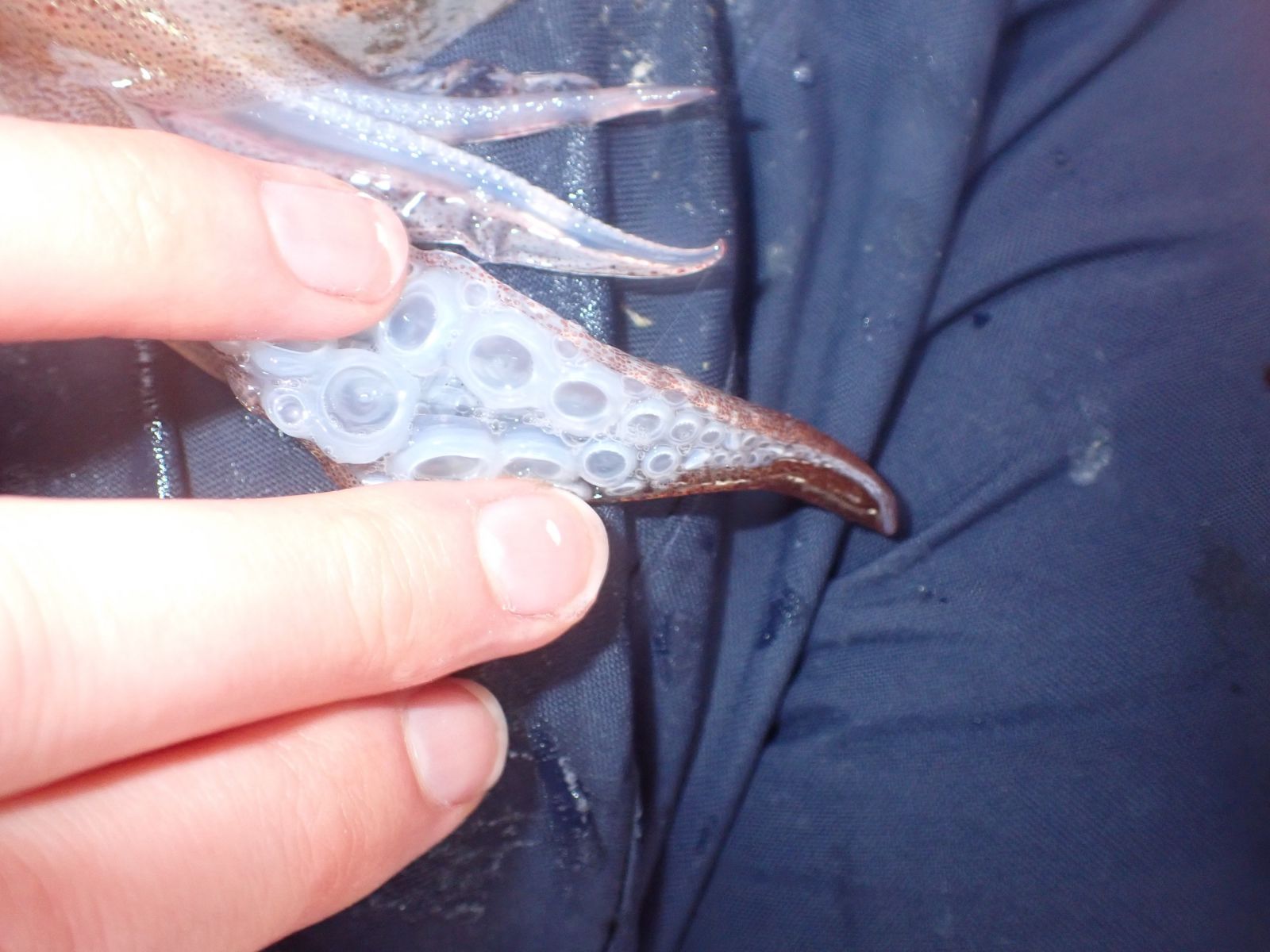
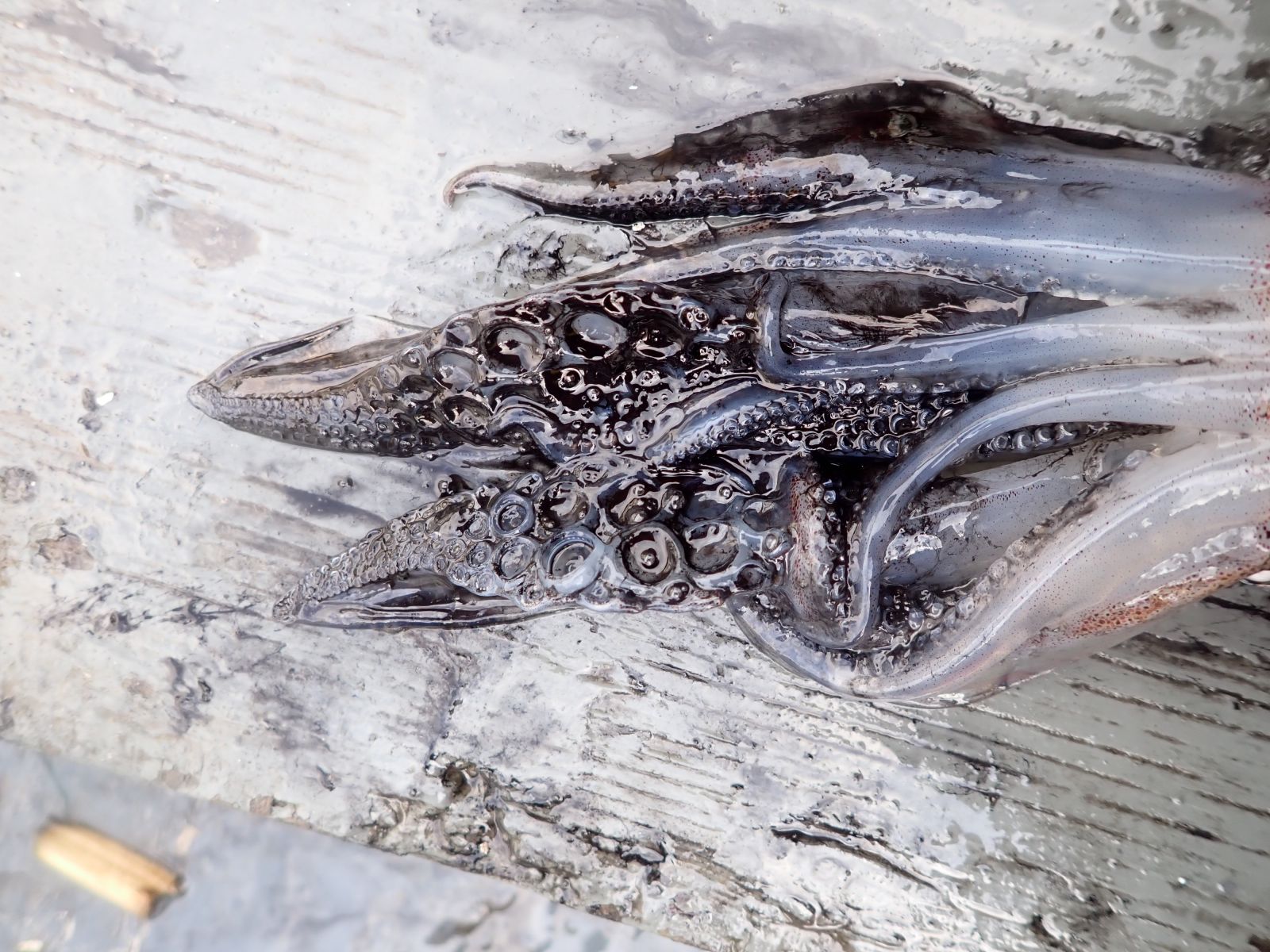
Figure 3. All the squid we caught were European squid, as seen from the two rows of large suckers.
Having handlined for pollack and mackerel previously I wasn’t sure what to expect when my first squid came onto the jig, however no sooner had I dipped into the water in our first ‘spot’ and I was on. I slowly reeled in, cautious not to go too hard or fast at risk of breaking off the tentacle and losing the squid. Slowly I saw its’ orangey figure coming up towards the boat, a brief squirt of water to let it’s feelings known and it was onboard. My first squid caught.
They’re truly beautiful animals (I think!), perfectly designed to move quickly through the water, to feed on the small feed fish such as sardines and sprat that form their diet and to camouflage in the rocky areas they live in.
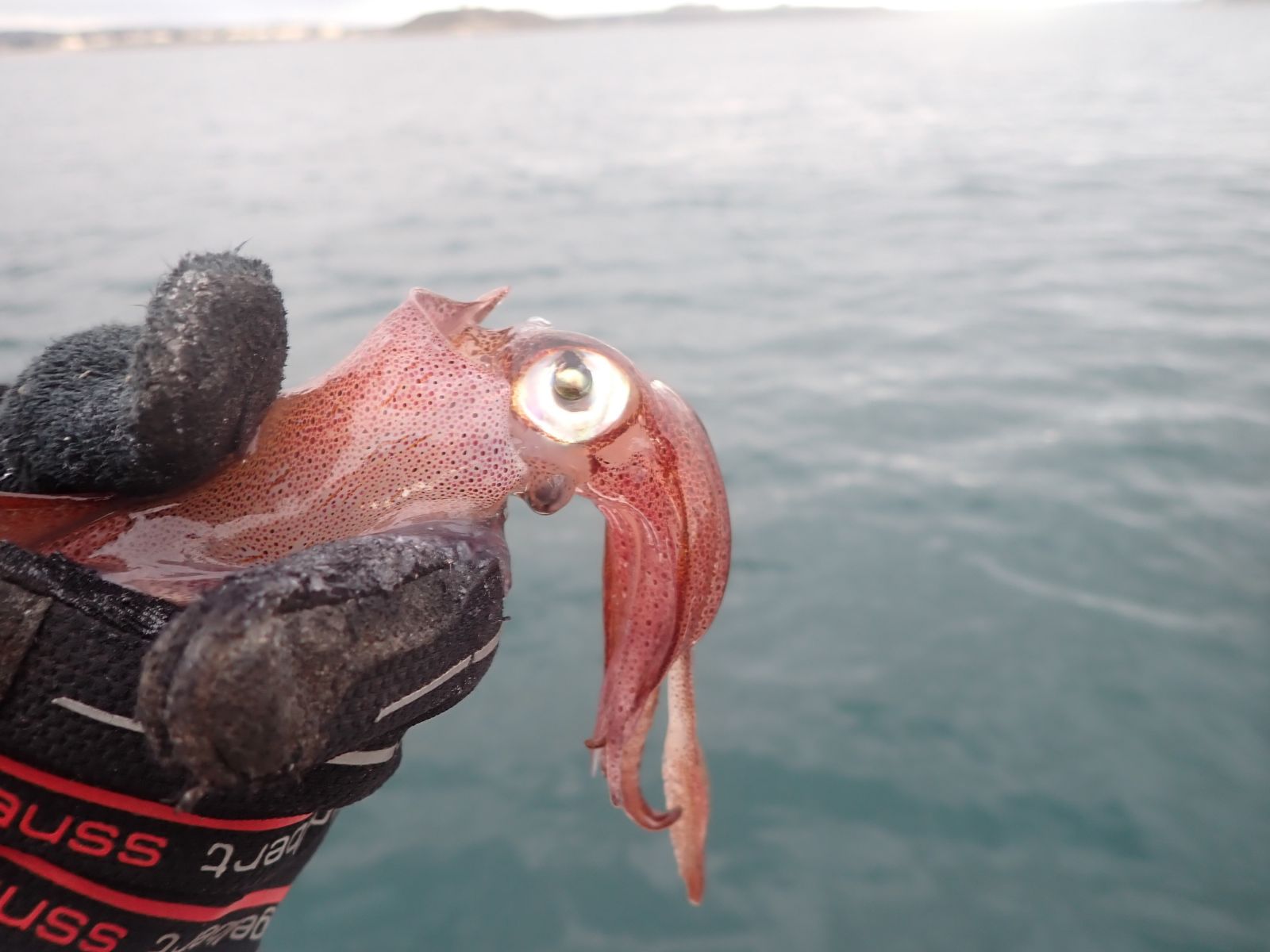
Figure 4. Squid close up
Where to find squid is all part of the dark art of the fishery. Although patchy in abundance there are certain areas where they are more likely to reside, these include reef, reef drop offs and gullies and wherever there are patches of feed fish (their prey!). It was also said they are more likely to be over sand in rougher sea conditions and rock in calmer sea conditions.
This is going to be a fast fill up, I thought after our successful first 5 minutes. However, I was more of a grasshopper then, and soon learnt that this is how squid keep you reeled in. They tease you, appearing in a flurry for a few minutes and then leave you desperate for a reappearance for an hour or few. Just the same as how you control the jig in the water, letting it out to the bottom, then reeling in slightly and slowly moving up and down, with a few sharp, quick retractions every now and again. The very best at this was John the squid whisper, who was crew for skipper Richard Gale on my second squid outing.
Figure 5. Squid
We are big fans of
handlining for squid at Cornwall Good Seafood Guide for several reasons. There is very little bycatch, in fact the only thing you could accidentally catch is cuttlefish or octopus, although this isn’t common. And if you do, the jigs are gentle enough that with careful handling onboard, any unintended catch can be put back in the sea unharmed and with an exciting story to go and tell it’s friends. In fact, both fishers I worked with said they always put any octopus they caught back, as they thought they were too intelligent and nice creatures to keep. Regardless of your thoughts on this, it’s always good to have a fishing method which enables you to return unwanted fish, unharmed to the sea. When I was fishing with Nick we put a couple of little ones back to keep growing for a few more weeks and they swam strongly away.
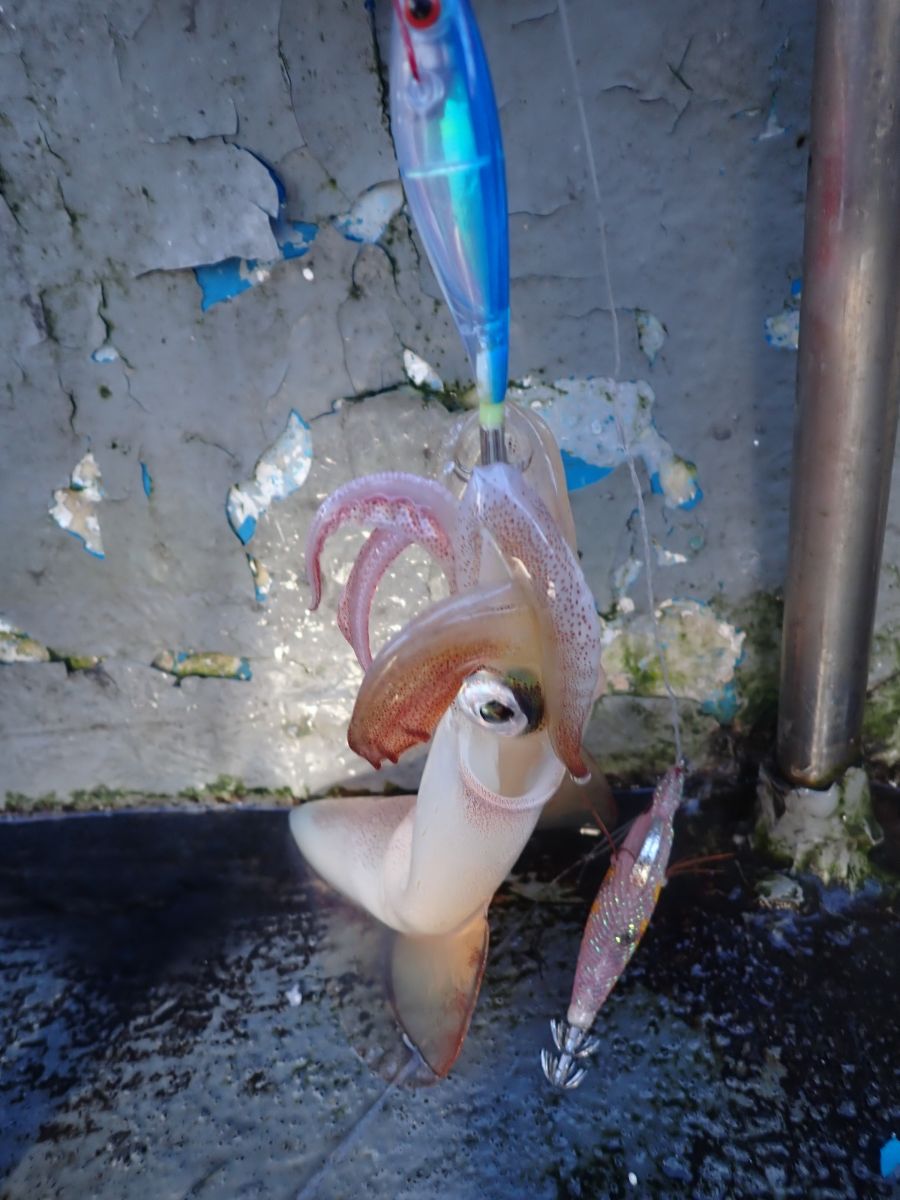
Figure 6. Squid on jig.
The second reason we love inshore squid handlining is that is doesn’t harm the seafloor or environment in which fish are being caught. There is no damage to any of the natural structures that provide homes for our sea life. To be able to catch a fish in this way is something to be very proud of as a fisher, and as a consumer when eating fish that you know has been caught handlining.
The third reason is a squid’s biology. European squid have a very short life span and fast reproduction rate, for fisheries this means they grow fast and lay lots of eggs which enables the population to replenish itself quickly. They live for approximately a year and females will die after laying eggs. Veined squid have a slightly longer life span and slightly lower reproduction rates, however they are still considered sustainable species to fish biologically. Because of this, any environmental changes that effect the squid are detected very early on. For example, a warmer summer may see an increase in squid the following year, or if fishing was too intensive you would be able to detect this immediately in the following year. This has been seen with changes in migration timings of squid in warmer than usual years.
This differs from long lived species such as sharks and conger eels where conditions which effect their populations may not be able to be detected for years after occurrence, at which point it is much harder to act to ensure populations are healthy.
European squid are more common around the south of the UK and Cornwall and veined squid are more frequently found towards the North of the UK and in the North Sea (check out the beautiful figures in Laptikhovsky et al. 2022 to help visualise this). There appears to be a spawning segregation, with veined squid spawning in the North and European squid spawning in around the English channel towards the south. European squid eggs will not survive temperatures lower than 10°C, whereas veined squid eggs can survive down to 8°C. Both can pause development when temperatures become too low and will restart as temperatures increase. There appears an eastward migration of both species in the warmer months and this migration leads squid back to the warmer waters of the western English channel and Celtic sea in the winter months.
Due to these movements squid are mainly caught in the UK in a few select months of the year, each year. This can be seen in landings of squid in the UK, with much larger quantities landed in the autumn and winter months, compared to in April and May when there is a sharp decline in landings, for example from 167 tonnes in February to 23 tonnes in April 2022 (MMO: UK vessels in UK ports). This furthers the sustainability of the fishery in Cornwall as it cannot be targeted all year.
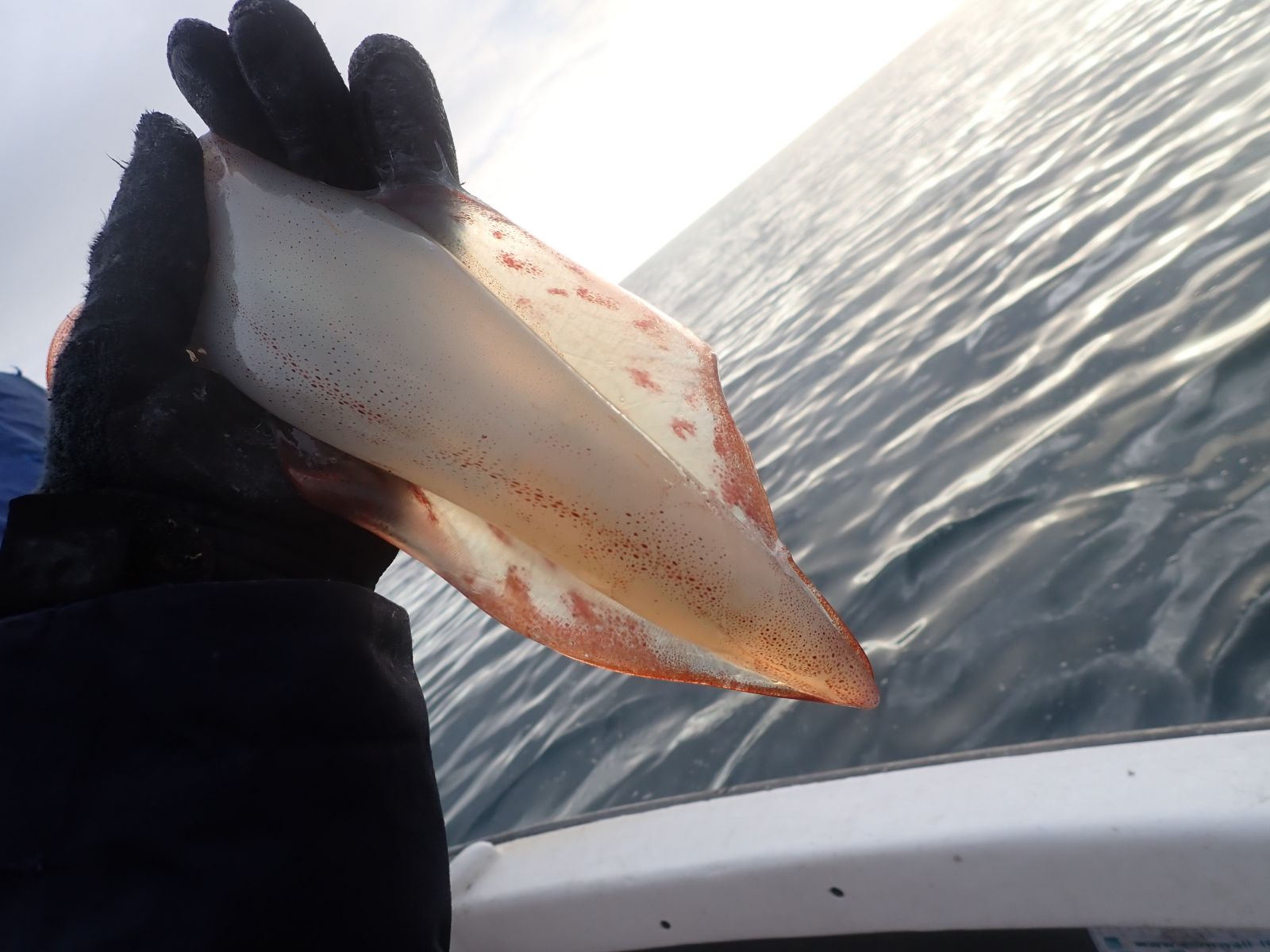
Figure 7. Underside of squid.
I studied the suckers on each squid that came aboard the boats, it was time consuming, inky and a little confusing. I imagine it’s something which would become easier with time and experience, however European and veined squid are notoriously hard to tell apart. This has meant that squid landings have never been separated by species, either in the UK or in Europe. Due to this, the lack of research carried out on the species, and the lack of management for the species (no quota and no Minimum Landing Size) it is really hard to assess whether the European or veined squid are being fished sustainably. We have no idea how big the stock is, no idea of how much of each is being landed and there are no assurances that juveniles are being left to breed the following year.
This has left Cornwall Good Seafood Guide in a tricky situation. We know the biology of the fish makes it sustainable, yet we have no management and no stock assessments. Therefore, sadly when we put it through our checks to assess it for the guide it is rated a 4 - so not included on our recommended list. We feel that this is really unfair on our local, inshore squid fishers. They are using an entirely sustainable method, to catch a likely sustainable fish, it is the management and stock assessments that are letting it down.
In the UK in 2010 we exported 3.1 of the 3.7 tonnes of squid landed into the UK, and we then imported 7.3 tonnes of squid caught outside of the UK. This is madness to us!
We wanted to write this article to help users of the Cornwall Good Seafood Guide understand the complexity around this species, and to let you know that now is the best time to be eating local, handline caught squid in Cornwall and we whole heartedly encourage you to do so. By ensuring your squid has been caught locally, by a rod and reel you can know you are eating a likely sustainable fish, caught with no bycatch or habitat damage and are supporting our local, inshore, small boat fishing fleet. We will be working behind the scenes to try and understand why the two species are not separated on landings and working together to try and come up with solutions to ensure better knowledge and management of this species so we are able to move it onto our recommended list and shout about how great it is every year.
Please head to our website to find one of our supporting suppliers near you and always ask at your local fish mongers if they don’t have squid on sale, as they may be able to ask a local fisher to head out and catch some for you!
Figure 6. Squid in fish box
A huge thanks to skippers Nick Mackrory and Richard Gale (and squid whisperer John) for welcoming me onboard and taking the time to teach me, letting me soak up their years of wisdom. Chris Gilbertson at Mevagissey Harbour Office for taking time to talk to me and put me in contact with brilliant fishers.
Below is a list of references used in this article and worth a read if you want to further your knowledge on these cool species.
All information correct at time of writing December 2022.
González, Á.F., Otero, J., Pierce, G.J. and Guerra, A., 2010. Age, growth, and mortality of Loligo vulgaris wild paralarvae: implications for understanding of the life cycle and longevity. ICES Journal of Marine Science, 67(6), pp.1119-1127.
Laptikhovsky, V., Allcock, A.L., Barnwall, L., Barrett, C., Cooke, G., Drerup, C., Firmin, C., Lozach, S., MacLeod, E., Oesterwind, D. and Petroni, M., 2022. Spatial and temporal variability of spawning and nursery grounds of Loligo forbesii and Loligo vulgaris squids in ecoregions of Celtic Seas and Greater North Sea. ICES Journal of Marine Science, 79(6), pp.1918-1930.
Pierce, G.J., Zuur, A.F., Smith, J.M., Santos, M.B., Bailey, N., Chen, C.S. and Boyle, P.R., 2005. Interannual variation in life-cycle characteristics of the veined squid (Loligo forbesi) in Scottish (UK) waters. Aquatic Living Resources, 18(4), pp.327-340.
Accessed: December 2022
Accessed: December 2022

